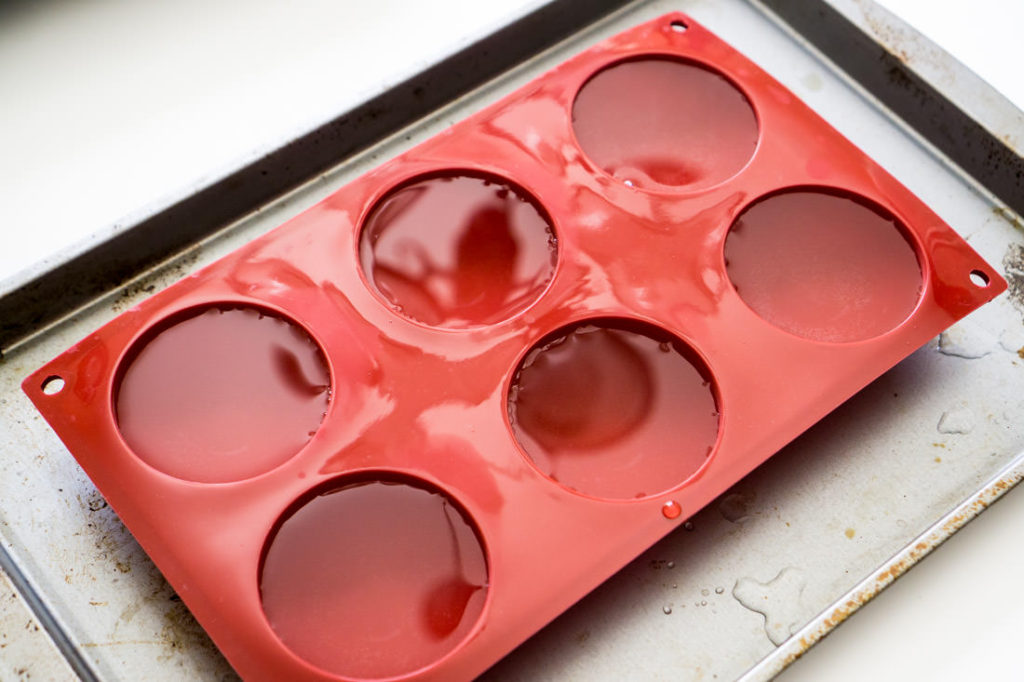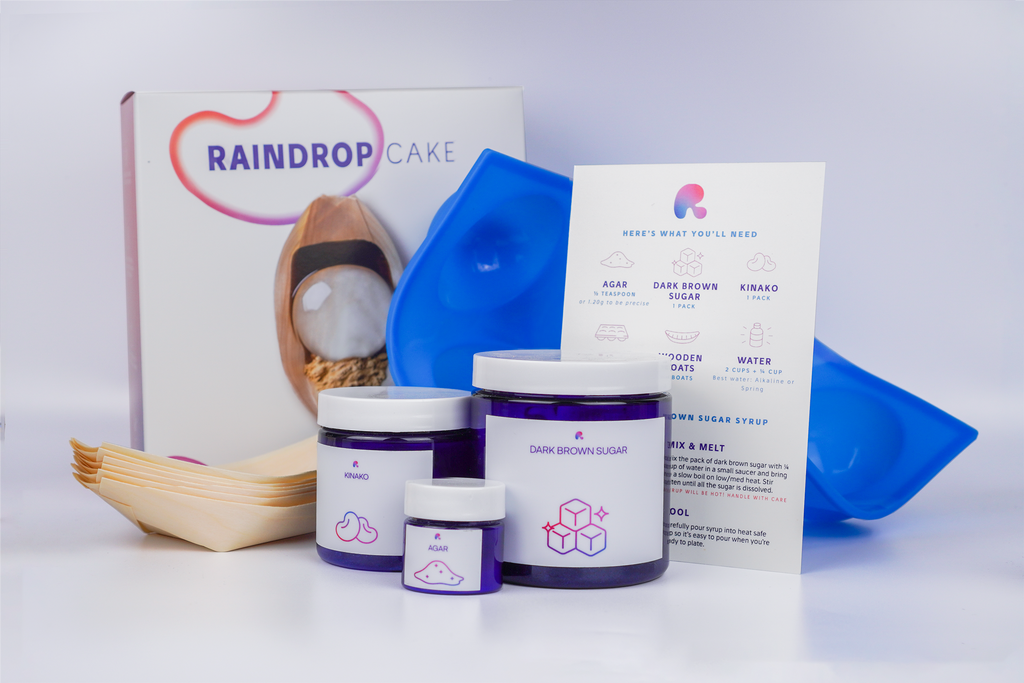

Stir constantly until all the agar-agar is dissolved. Place the water with agar-agar in the low-medium heat. Heat the remaining water and pour over the agar-agar. Add a little water until the agar-agar is totally moist. Weigh the agar-agar and place in a small pot.

The nice thing is that you are literally playing with water… As a result of all these “experiments” I just can tell you that you have to do your own “experiment” since the consistency will depend entirely on the quality of the agar-agar you use. Yes, it did work! My notes reminded me of my lab notebook with all the calculations since I was varying the amount of water as well. I taper down to 0.5%, then to 0.25% (not bad) but wanted to push lower and went to 0.1% which the gel barely set…finally decided to add a bit more and went for 0.2%. I started with the percentage that I used to use when working in the microbiology lab, 1.5%…then went down drastically since it gave me a jelly ball so hard that I could almost throw on the floor and it would bounce back.

Therefore the amount of agar-agar is very critical.Īfter searching through the internet I found that the ratio of agar-agar to water varied from 0.25% to 3% meaning that in 1 cup (250ml) of water the amount of agar-agar varied from 0.625g to 7.5g…yes, you read it right…so here is where my “experiments” started… A little extra of agar-agar the “cake” will turn into a flavorless jelly, a little “too little” and the “cake” will not hold its shape.

The trick is to have the right ratio of water and agar-agar to achieve a very soft almost running gel. When I first saw these raindrop cake (which in my opinion it is not a cake per say, cake in my view should contain flour or its substitutes) I was fascinated by its shape and the notion of its pureness…upon reading the ingredients, I immediately could imagine its textures as I had worked with agar-agar, both in the kitchen and in the lab. How can a dessert made of almost 99.8% of water be so trendy? The answer…it is all in its texture…


 0 kommentar(er)
0 kommentar(er)
